Pay-Per-Click (PPC) Advertising: Benefits, Platforms & Best Practices
Abirami Dharmalingam
August 14, 2025
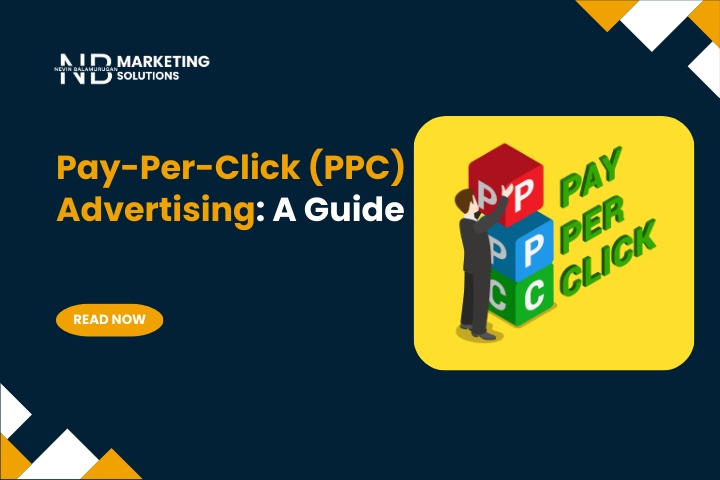
What is Pay-Per-Click Advertising: Definition, Benefits, Platforms and Best Practices
You’ve probably seen pay-per-click (PPC) advertising when you search for a product or service on Google. These ads appear at the top of your search results.
With this, you can connect with millions of people around the world – in just a few minutes. According to Statista, Google (98%), Facebook (76%), and Instagram (70%) are the most widely used platforms for PPC advertising.
As a marketer, how much do you understand about pay-per-click (PPC) advertising?
PPC is a skill that you should have in your toolbar, so have a basic understanding of PPC. In this blog, we’ll look at everything about pay-per-click (PPC) advertising – definition, benefits, platforms to use, and best practices you need to follow.
Let’s get started.

What is Pay-Per-Click (PPC) Advertising?
Pay-per-click (PPC) advertising is a method of advertising where you pay a fee to have your website on the search engine result page (SERP) when a customer types a specific keyword and clicks on your ad. These paid ads appear on the search results to direct customers to your website.
So, imagine this, your customer searches for a product or service you offer.
Wouldn’t you want your website to appear right at the top of their search results? Don’t you wonder to see your ads being placed at the top of the organic results? For instance, check out the paid ad that came up for a specific keyword “running shoes for men”.
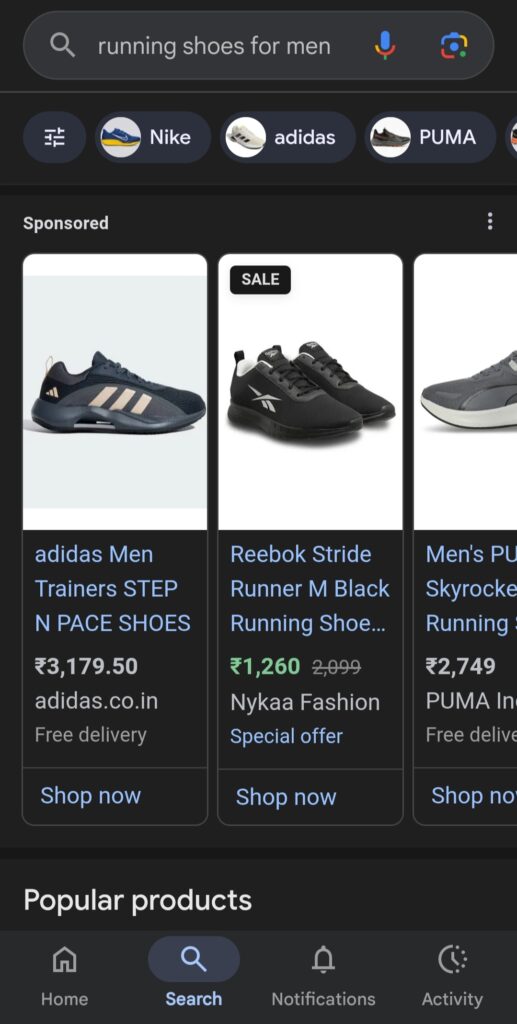
You may think PPC is common only in search engine marketing (on platforms like Google or Bing), but it’s also used across social media platforms such as Facebook, Instagram, LinkedIn, and even TikTok.
How Does Pay-Per-Click (PPC) Advertising Work?
Your pay-per-click (PPC) ads revolve around keywords. When your customer searches your niche-related product or service on Google with a specific keyword, your paid ad appears at the top of the search page because it matches the words they typed in. That’s why you need to spend a certain time period researching and picking the right keywords.
The better your keyword match, the more clicks you get – which means more sales.
Learn how to do keyword research and how to use Google Ads Keyword Planner to find target keywords. Check out here:
How To Use Google Ads Keyword Planner For SEO in 2025
How To Do Keyword Research To Find Better Keywords For SEO?
Benefits of Pay-Per-Click Advertising
Now, you know what pay-per-click advertising is and how it works, so let’s look at some of the benefits of PPC ads.
Here are the top benefits of PPC ads, if you choose them for your business:
1. PPC ads allow you to target a specific audience
With customers’ demographics, keywords, and behavior, you can reach your target audience whom you have ever connected with.
Moreover, you can skip the cold audience (who aren’t ready to buy) and target the warm audience (who are ready to buy). Plus, you have another important use of PPC ads – you can create retargeting campaigns to target visitors who didn’t purchase after landing on your site.
2. PPC ads are cost-effective
In pay-per-click (PPC) advertising, you have complete control – budget and cost per click (CPC). You decide exactly how much you’re willing to spend, and you only pay when someone clicks your ad and visits your landing page. Those clicks often come from customers who’re already interested in what you offer. So, you have a higher chance of conversion.
3. PPC ads deliver fast results
With pay-per-click (PPC) advertising, you can start driving traffic to your landing page soon after launching your campaign. You may know, organic rankings are great, but they can take months or sometimes even years to get your website onto the first page of search results.
As a startup brand, you probably don’t have the luxury to wait for organic or direct traffic. Through PPC ads, you can accelerate your sales and growth fast. Plus, you can appear a the top of search engines and acquire new customers.
4. PPC ads can be easily optimized
With pay-per-click (PPC) advertising, you have full control over the keywords you target, where your ads appear, and how much you spend. You can also conduct A/B split testing to compare different ad variations and determine which delivers the highest return on investment (ROI).
5. PPC data can enhance your SEO strategy
PPC cannot replace your search engine optimization (SEO) efforts. But insights from PPC campaigns, such as keyword performance and user behavior, can help refine your SEO strategy for better long-term results.
When customer search for your targeted keywords, you gain valuable insight into their search intent. By delivering highly relevant ads to these searchers, you increase click-through rate (CTR).

SEO vs PPC: Difference
Search engine optimization (SEO) is the process of optimizing your website to achieve higher rankings and gain organic traffic from search engines. With PPC, you’ll pay for each click your ad receives. While the two operate differently, businesses often achieve the best results when they integrate SEO and PPC strategies, allowing them to maximize visibility and drive both immediate and long-term traffic.
Best Pay-Per-Click (PPC) Advertising Platforms
Now that you’ve got the basics of PPC, the next big question is – where should you advertise? There’s no shortage of platforms to take your ad budget, but the smart move is to choose the ones that can give you a better ROI.
Here is a list of some of the top pay-per-click (PPC) advertising platforms.
1. Google Ads (formerly called AdWords)
If customers want some information, they Google it. How often do you hear someone say, “Let me Google that? Probably more times than you can count, and that’s why Google Ads is the top priority when it comes to paid ads.
Google Ads is the best platform because it’s “more widely used.” Do you hear, Google processes over 99,000 search queries every second, giving endless opportunities to target keywords that drive clicks from the right audience. Moreover, you can run ads across the Google Network, which includes:
- Google’s search results pages
- Google-owned platforms like YouTube and Google Maps
- Third-party websites and apps that come under the Google Display Network (GDN)
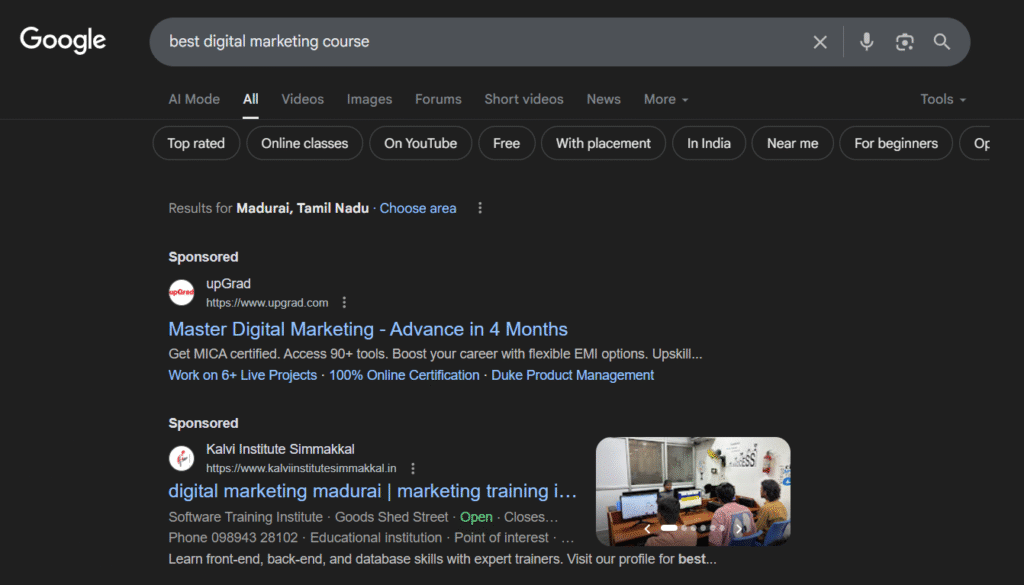
Image Credits: Google
Plus, you can choose different types of Google Ads for your PPC campaign – search, display, shopping, and video.
2. Bing Ads
Bing is the second-largest search engine, where people conduct 10,417 searches per second. Moreover, Bing targets keywords directly related to your brand, and your ads are more likely to be seen by customers already interested in your products or services.
One major benefit of Bing Ads is its lower cost-per-click (CPC), making it ideal for startups and small businesses. But you can deliver highly targeted and cost-effective traffic.
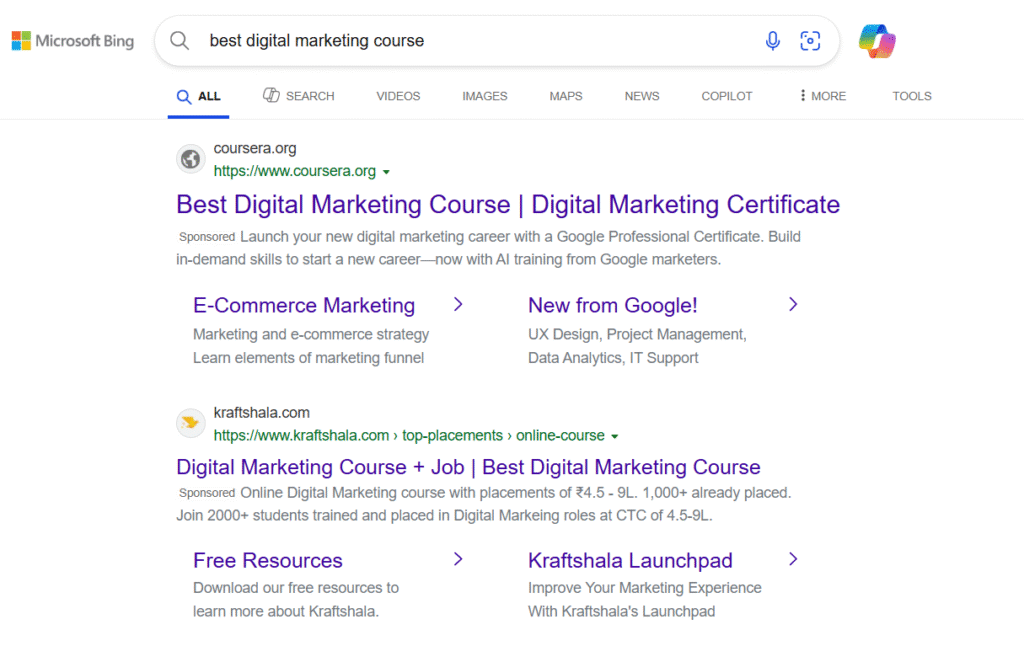
Image Credits: Bing
3. Meta Ads (such as Facebook and Instagram)
You can run pay-per-click (PPC) advertising across both Facebook and Instagram — two of the most widely used social platforms in the world. Facebook is the leading social network with 3.07 billion monthly active users, while Instagram has 2 billion. The customer may recognize your paid ad by the “Sponsored” label in the top left corner.
With Meta Ads, you can use a variety of ad formats – single image, video, and carousel ads, with clickable CTAs or swipe-up links designed to drive traffic to your website or landing page.
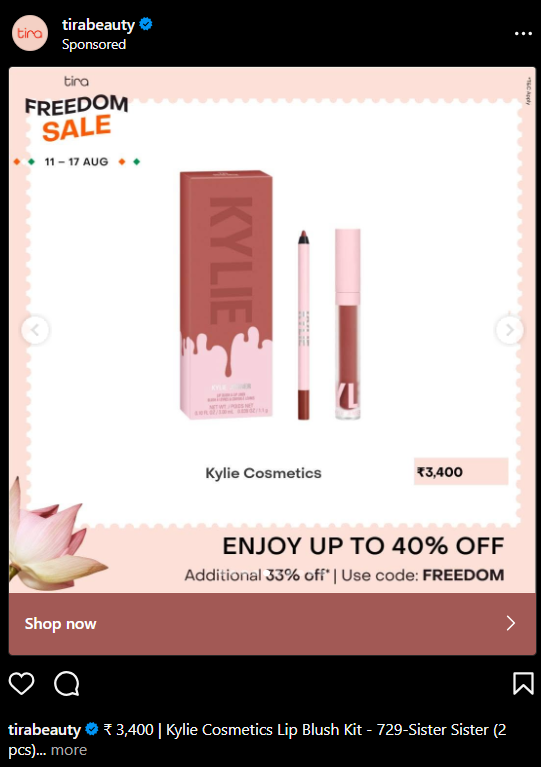
Image Credits: Instagram
4. LinkedIn Ads
With LinkedIn Ads, you can access over 1 billion active professionals on the world’s largest professional networking platform. If your goal is to connect with decision-makers, industry leaders, or specialized professionals, LinkedIn is a top choice.
You can choose from multiple ad formats, including text ads, sponsored content (appearing directly in customers’ feeds), sponsored messaging (delivered to the inbox), and even dynamic ads that personalize content for each customer.
What sets LinkedIn apart is its advanced professional targeting. You can narrow your target audience by job title, employer, industry, experience, professional skills, and more – effective for B2B marketing, recruitment campaigns, and lead generation in niche industries.
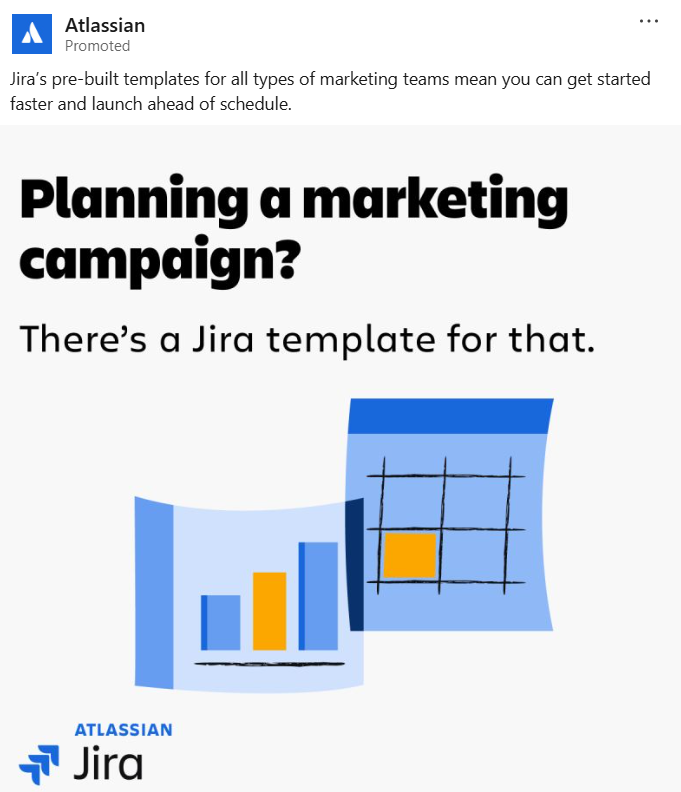
Image Credits: LinkedIn
Best Practices for PPC Advertising
Let’s see a few tips you need to follow while using pay-per-click (PPC) advertising.
1. Start with clear goals
Define exactly what you want from your campaign — sales, leads, website traffic, or brand awareness. Your strategy, ad copy, and targeting should all align with your goals.
2. Do keyword research
You can use tools like Google Keyword Planner, SEMrush, or Ahrefs to find high-intent keywords your audience is actively searching for. Just focus on both exact and long-tail keywords to target your specific audience.
3. Exclude negative keyword
Filter out irrelevant searches by adding negative keywords. This prevents wasted clicks and ensures your ads only show for terms that matter.
4. Write compelling ad copy
Your headline and description should grab attention, match user intent, and communicate the value you offer. Plus, include a strong call-to-action (CTA)
5. Optimize your landing page
With a click in your ad copy, you can’t convert your customers. Your landing page does it, so keep it relevant to the ad, fast-loading, mobile-friendly, and easy to navigate.
6. A/B Testing
You need to experiment with different headlines, ad copy, keywords, and CTAs. Run A/B tests to identify what works best and double down on top performers.
7. Monitor and adjust regularly
Keep your eye on metrics like click-through rate (CTR), cost-per-click (CPC), and conversion rate. And adjust your bids, targeting, and ad copy as needed.
8. Focus on the quality core
By delivering highly relevant ads, optimizing landing pages, and using targeted keywords, you can lower your CPC and improve ad placement.
Start Your Pay-Per-Click Advertising and Track Your Campaign Performance
You now know the basics of pay-per-click (PPC) advertising, so you’re ready to start your first PPC campaign. If you want any help related to PPC advertising or other digital marketing services, reach NB Marketing Solutions to create and run ads for you. We help you gather the insights you need for more effective ads.
Then why are you waiting for? Contact us now to achieve your marketing goals.
Recent Posts
Have Any Question?
- (+91) 938-542-1049
- info@nbmarketingsolutions.in
Categories
Make Appointment
Confused Over Choosing The Right Services For Your Business?
Tamil Nadu, India
- Near TMB Bank, Anjugramam post, Kanyakumari 629401
- info@nbmarketingsolutions.in
- (+91)93-8542-1049
